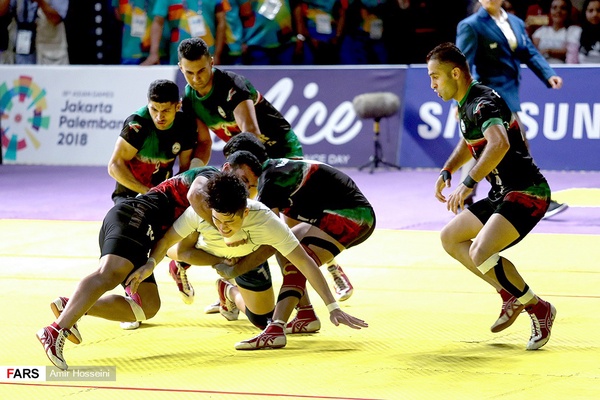Unique Sports From Around The World – Kabaddi

“File:Iran men’s national kabaddi team 13970602000432636707284535394012 98208.jpg” by Amir Hosseini is licensed under CC BY 4.0
There are a ton of sports that are weird or interesting, that most Americans have never heard of, and Kabaddi is one of those sports. It’s mostly popular in South Asian countries, such as Iran and India, but also has a devoted following in some parts of Europe.
Kabaddi was believed to be created over 4000 years ago in pre-historic India. The game has references in both Hindu and Buddhist mythology. But the rules weren’t written down until 1915 and was eventually included in the Indian Olympic Games, Kolkata. In 1950, the All India Foundation For Kabaddi was founded, and then hosted a men’s tournament in 1955. Fast forward all the way to 2014, the Pro Kabaddi League was founded. Which transformed Kabaddi into something that many pro sports are, with branding deals, star players, and even a player draft.
Kabaddi is played on a 13 meter by 10-meter court, with a line down the middle, and the bonus line is at the halfway point from the centerline to the end of each side. Teams are up to twelve players, with a maximum of seven players on each side in play. Points are acquired by attacking and defending
Attacking is done by sending one of your players to the other side of the line. That player must hold their breath while attacking, and to ensure they aren’t taking breaths, that attacker chants “kabaddi”. The attacking team typically gets points by touching one or more opponents. There is an opportunity to get bonus points if an opponent steps out of bounds, or if the attacking player crosses the bonus line. Once an opponent is touched, the defending team can stop the attacker from crossing back over. Either by tackling or otherwise stopping them from crossing over, until they’re out of breath.
There are a few interesting strategies in kabaddi, for example, attackers sometimes kick very close to opponents’ faces to get them out of bounds and scoring a free point. Defending players often move in groups of two and sometimes three, so they can tackle more effectively. This also lets the other players in the group pull their teammate out of the way of the boundary or the attacker. The winner is the team with the most points. In the event that teams both have the same amount of points, the game is declared a draw.

Interests: Not Sports, Gaming of all Kinds, LARP
Quote: “Water, Fire, Air and Dirt, freaking magnets, how do they work?” ~Shaggy 2 Dope
Theme...





